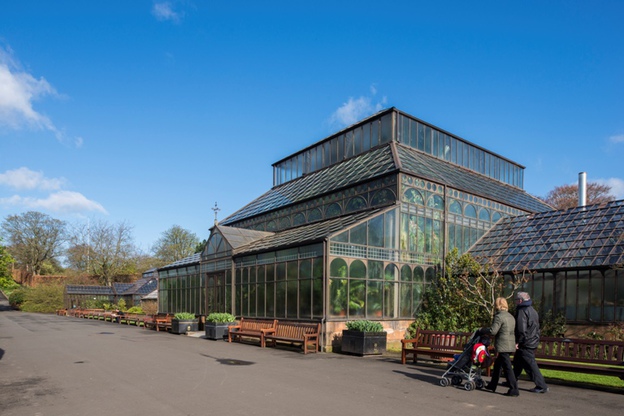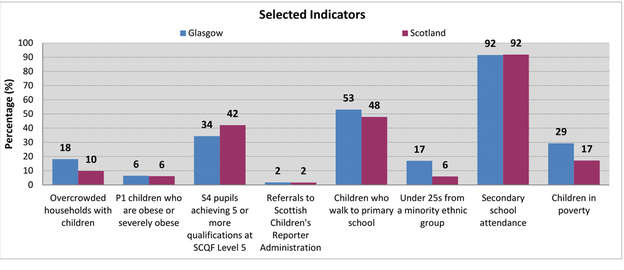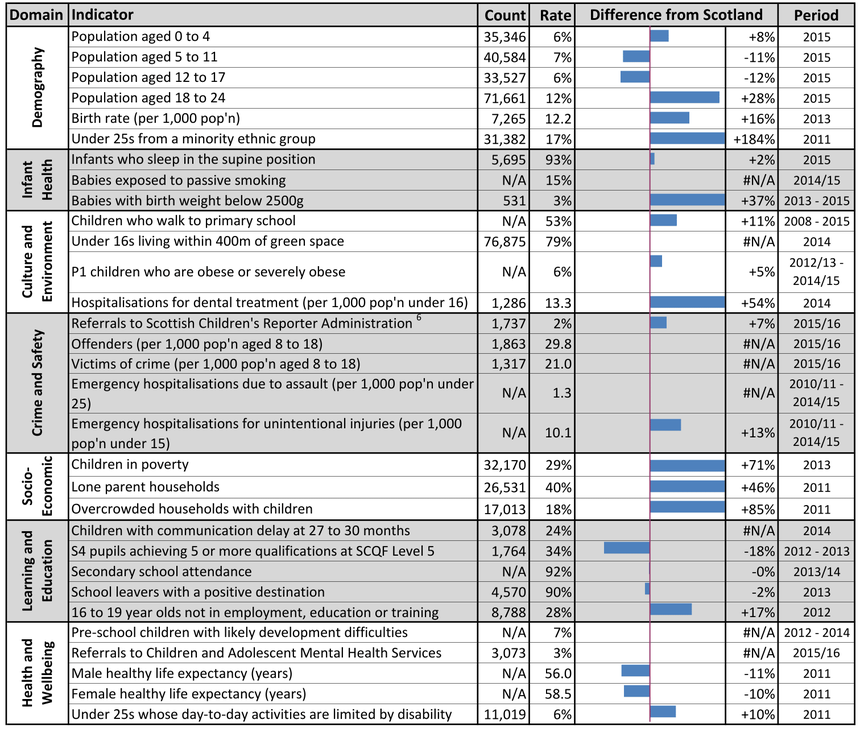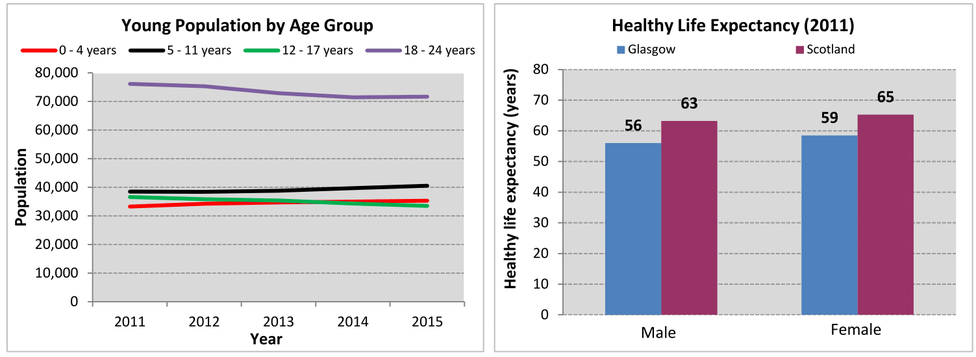Children & Young People's Profiles
NE Sector
South Sector
NW Sector
Sighthill, Roystonhill and Germiston
Springburn
Balornock and Barmulloch
Robroyston and Millerston
Blackhill and Hogganfield
Ruchazie and Garthamlock
Easterhouse
Baillieston and Garrowhill
Mount Vernon and East Shettleston
Tollcross and West Shettleston
Springboig and Barlanark
Riddrie and Cranhill
Haghill and Carntyne
Dennistoun
Calton and Bridgeton
Parkhead and Dalmarnock
Toryglen
Ibrox and Kingston
Greater Govan
North Cardonald and Penilee
Bellahouston, Craigton and Mosspark
Pollokshaws and Mansewood
Newlands and Cathcart
Crookston and South Cardonald
Govanhill
Corkerhill and North Pollok
Priesthill and Househillwood
South Nitshill and Darnley
Carmunnock
Arden and Carnwadric
Greater Gorbals
Pollokshields East
Pollokshields West
Shawlands and Strathbungo
Langside and Battlefield
King's Park and Mount Florida
Castlemilk
Croftfoot
Cathcart and Simshill
Kelvindale and Kelvinside
Maryhill Road Corridor
North Maryhill and Summerston
Ruchill and Possilpark
Lambhill and Milton
City Centre and Merchant City
Yorkhill and Anderston
Hillhead and Woodlands
Hyndland, Dowanhill and Partick East
Broomhill and Partick West
Anniesland, Jordanhill and Whiteinch
Yoker and Scotstoun
Knightswood
Blairdardie
Drumchapel
Temple and Anniesland
Children and Young People's Profiles
*Please note that this profile is based on data from the 2011 Census.*
Download a printer friendly version of this profile - PDF.
Glasgow has a population of 181,118 children and young people (aged 0-24 years).

The proportion of school age children in Glasgow is lower than Scotland as a whole, but there are comparatively more young children (aged 0-4 years) and 18-24 year olds. 17% of under 25s are from a minority ethnic group. 79% of children live within 400m of green space. Glasgow has more lone parent households (+46%), emergency hospitalisations for assault (+100%) and dental hospitalisations (+54%) than in Scotland overall as well as higher levels of child poverty (+71%) and a considerably higher proportion of children living in overcrowded households (+85%). S4 pupil attainment in Glasgow is lower (-18%) than the Scotland average and 90% of children leaving school go onto a positive destination (higher/further education, employment or training).
Glasgow Comparison with Scotland
Neighbourhood Trends
The number of 12-17 year olds in Glasgow has decreased by 8% since 2011, while the number of 0-4 year olds has increased by 6%. Healthy life expectancy for males is approximately 7 years lower than Scotland as a whole and 6 years lower for females.
 Pupil attainment in Glasgow is lower than in Scotland overall, while secondary school attendance is similar. The proportion of children and young people from minority ethnic groups is much higher than the Scotland average. Levels of child poverty and children living in overcrowded households are higher than average. More primary school children walk to school in Glasgow, while levels of obesity among P1 children are similar to the Scottish average.
Pupil attainment in Glasgow is lower than in Scotland overall, while secondary school attendance is similar. The proportion of children and young people from minority ethnic groups is much higher than the Scotland average. Levels of child poverty and children living in overcrowded households are higher than average. More primary school children walk to school in Glasgow, while levels of obesity among P1 children are similar to the Scottish average.
Notes
1.Data sources: Census 2011, GCPH, Glasgow City Council, HMRC - Child Poverty Unit, ISD Scotland, National Records of Scotland (NRS), Transport Scotland, Sustrans, Police Scotland, the Scottish Government and the Urban Big Data Centre, Glasgow University.
2. Indicators are aggregated using latest available datazone (2001 or 2011); neighbourhood boundaries based on 2001 datazones.
3. All count figures of less than 5 (denoted as ‘< 5’) have been suppressed to avoid any potential identification.
4. Populations presented in the population trend chart, also used to calculate healthy life expectancy estimates, use NRS small area population estimates for the years 2011 - 2015.
5. ‘Healthy life expectancy’ is an estimate of the average number of years people are likely to spend in good health. It is calculated using population estimates, death registrations and self-assessed health from the 2011 Census.
6. Denotes children referred to the Scottish Children’s Reporter Administration for an offence or non-offence related reason.
There is a downloadable document providing detailed notes and definitions on the information presented in this profile.
There is a downloadable Excel workbook containing the data used in all of the profiles. This workbook also includes alternative output formats and further breakdowns of some of the variables.


